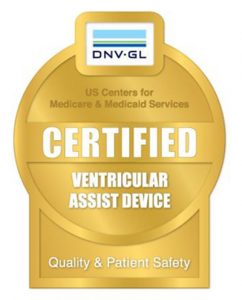Ventricular Assist Device (VAD)
A ventricular assist device (VAD) helps the heart pump blood from one of the main pumping chambers to the rest of the body or to the other side of the heart.
How does it work?
 During surgery:
During surgery:
- The Deborah® surgeon opens the middle of the chest with a surgical incision and then separates the breastbone, allowing access to the heart.
- Next, the surgeon will make space for the pump under the skin and tissue in the upper part of the patient’s belly wall.
- The surgeon will then place the pump in this space.
A tube will connect the pump to the patient’s heart. Another tube will connect the pump to the aorta or one of the other major arteries. Another tube will be passed through the skin to connect the pump to the controller and batteries.
The VAD will take blood from the ventricle through the tube that leads to the pump. Then the device will pump the blood back out to one of the arteries and through the patient’s body.
Am I a good candidate for treatment?
A patient may need a VAD if he or she has severe heart failure that cannot be controlled with medicine, pacing devices, or other treatments. Some patients get this device while on a waiting list for a heart transplant.
Not everyone with severe heart failure is a good candidate for this procedure.
What can I expect after treatment?
A VAD may help people who have heart failure live longer. It may also help improve patients’ quality of life.
- Deborah Heart and Lung Center has received designation as a certified Ventricular Assist Device facility. The certification includes both bridge-to-transplant and destination therapy VAD implants.
- Deborah® is one of six centers in New Jersey offering Ventricular Assist Device procedures.
